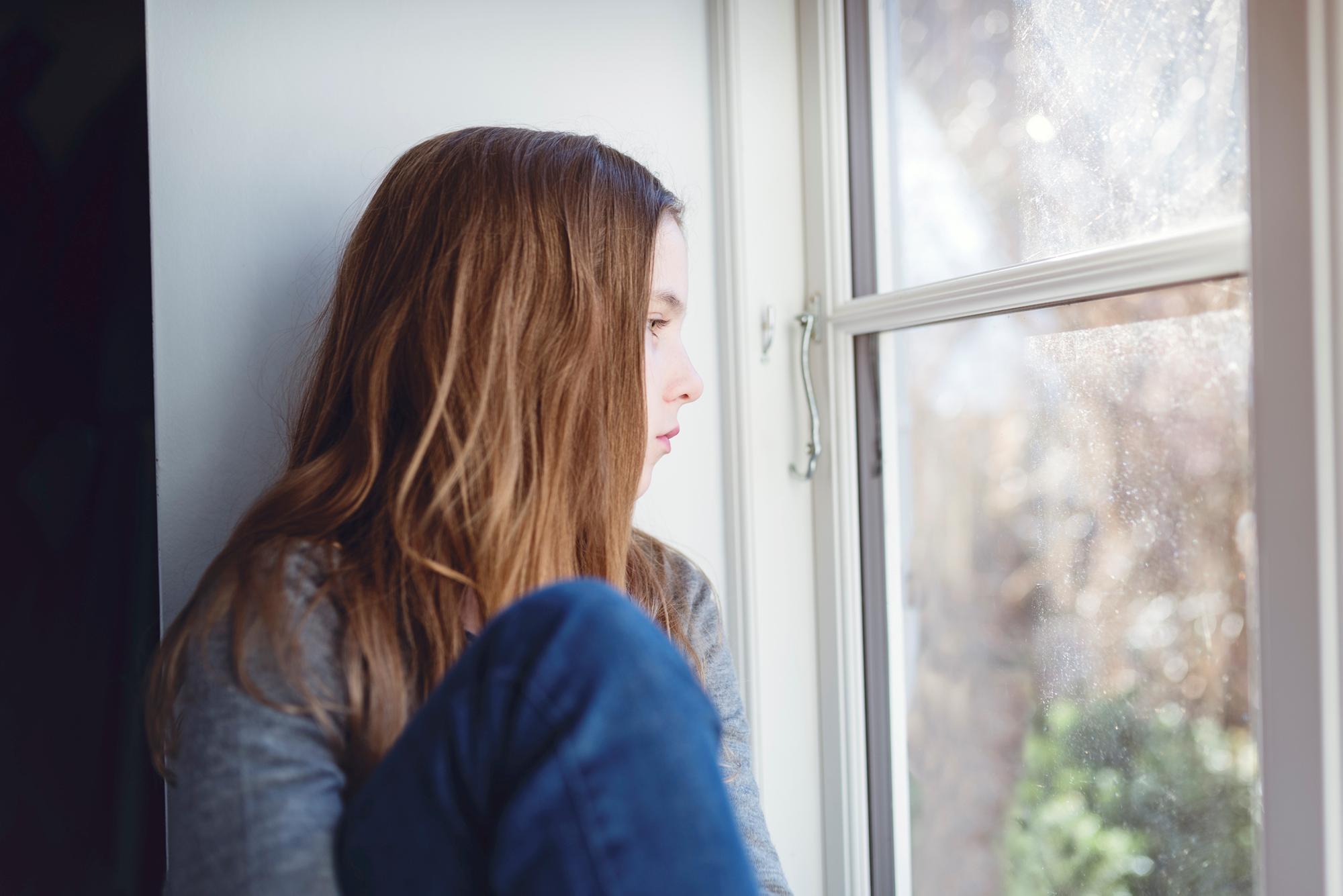
Anxiety is one of the most common illnesses seen in Australia and is very common in adolescents and children. It presents in a range of ways throughout our life span.
Human beings are designed to have anxiety, it is what keeps us safe, lets us look out for danger and make sure that we are okay. However for some people and in some situations anxiety becomes a problem.
This OCD Handbook for Parents is helpful in understanding a specific type of anxiety, obsessive compulsive disorder
Common Anxiety Issues in Children:
Separation Anxiety
This usually first occurs at the age of 8 to 9 months when a baby is learning who their primary care giver is. They are unsure of being away from them and they need to develop trust with new people. Children may show their separation anxiety by being teary, crying, hitting at or grabbing onto their parent at drop off or when being handed to someone other than a parent. This occurs at daycare quite often as well as kindergarten and school. For some children this is a huge hurdle and for others they are able to separate with little distress.
In younger children (under 6 or so) separation anxiety is the most common and is usually a reflection of a child having anxiety about leaving the people who ‘know them best’. For some children this period of anxiety can go on for years, and for others only days or weeks. It is your child learning to process and manage being away from you and trust that you are coming back. As they form stronger relationships with others, and develop interests in activities away from home. When these skills are stronger the separation anxiety lessens.
For some children when a parent is very ill, or away for work or other commitments or if there is a high level of stress in the family; their anxiety at separation can be very high. You might see yelling , shouting, screaming, you may be pulled or pushed by your child.
What to do
Ideally, we want your child to learn that it is safe to leave you. We help the child initially by having the parent/carer sit with them at day-care or kindy. Do some activities with them, wait until they feel ‘connected’ with the new group or space, and then gradually move away and say goodbye. For many children if we do this 5 to 10 times they will learn to separate. Other children will respond to this with the same degree of stress over and over, and it can be better at that point to drop them off, give them a hug or kiss tell them that you love them and hand them to the other trusted carer. Often after 5 to 10 minutes kids will settle, you can call and check if you want to and many parents do. If your child is not settling and is still very distressed after doing this for many weeks then we would wonder if they needed assistance to manage their anxiety. It would be helpful at this point to ask for a professional opinion, particularly if there is a family history of anxiety
Performance Anxiety
When having to compete in public for sport or academic reasons, children are fearful, as are most adults, of judgement and ridicule. Some children are overwhelmed by these feelings and develop panic when performing show and tell or other school based tasks.
Anxiety related to parental separation, death of a family member or relocation of the family
Large upheavals in a child’s life can cause anxiety due to the change to their comfortable routine and relationships. Children may become more clingy, more emotional and less focused on school work during this time as they try to make new connections and work out which relationships they are able to maintain.
For some children, Anxiety becomes significant and intrudes into their daily lives. Signs can include increased irritability, lack of sleep, loss of friendships and social connections, withdrawal from family situations and consequently a change in behaviour. As these children struggle to maintain a calm exterior as much as possible, they build up a large amount of physical agitation and emotional anxiety and these are then discharged when the children are around people that they have good relationships with. Children are aware that they can only show these intense feelings of frustration, distress and fear to those that they are closest to and therefore they often only show their parents and siblings.
Panic attacks
Panic attacks are an intense experience of anxiety. Kids often feel scared, describe themselves as ‘crazy’, start sweating, have a fast heart rate, and often want to leave where they are. These are all frightening and children become very scared of having more, which leads to avoiding places where anxiety may rise and where a panic attack may occur, hence why a lot of kids will stop doing non-routine things. They are often worried about how they will cope and therefore will display a lot of behaviours to avoid going out, such as yelling, kicking, shouting etc.
A panic attack last from minutes to almost an hour. Panic physically cannot last forever and eventually the anxiety lessens. To help a child through a panic attack, you can reassure them that you will keep them safe, you can have a quiet calm voice (which can be hard to do when they are so anxious, but it is very helpful if you can). You can encourage them to sit down and hold onto and squeeze your hand, or a small toy or fidget toy. Help them slow their breathing by reminding them to breathe in through their nose and out through their mouth.
After the panic attack is the time to talk about it, not during the panic. The brain in a state of panic is not ready for a conversation an your child won’t be able to tell you how they feel. Some kids won’t want to talk about their panic attack until the next day or longer, and as long as you are still talking to each other, that is OK.
Many children who are anxious are caring, kind and empathic children
who are very tuned into others emotions. They are likely to always be sensitive kids, however with family and school support, talking therapy, medication and information, it is likely that your child will improve and have a lot less anxiety. Lessening anxiety can take some time, and for many children a year or more is needed for anxiety to gradually lessen. Looking at the small gains such as your child being able to eat a different meal or get up earlier to complete a task are important things to recognise and give praise for.
Using a tick chart so that your child can work towards something special, such as staying up late to watch a movie, baking their favourite cake etc. can be a good way to show that you know they are working on their anxiety and gives you a chance to regularly talk about their successes.
Ways To Assist Children With Anxiety and Panic
Many of these children are keen to stay at home and stick to a routine. This helps their anxiety lessen as they are able to predict what will happen and therefore have a greater degree of control. However life is not always routine and you are likely to find yourself needing to deviate from routine. For anxious children, it can help to pre-warn them that someone else is picking them up from school, or that they are changing their swimming lesson time. etc It is likely to heighten their anxiety when you tell them, so they will need reassurance and assistance to feel calm.
This may include:
- Having something to think of when their anxiety starts, such as a pet, a favourite song, a favourite photo.
- Having something to fidget with, such as a keyring, stress ball, handkerchief, so that they are able to channel their physical agitation into something other than distress
- Having the family calendar on display, with dates and times on it to show that there are plans ahead.
Anxious children often fear the worst, so if you are late picking them up they are often very fearful that you will never come. Talking about these feelings is difficult but helpful. If you know that it is scary for them and are willing to talk to them about it, then they feel supported and their anxiety lessens.
Ways to curb anxiety
- A good night’s sleep is needed for children with anxiety, because it gives the brain a chance to rest and ‘reset’ overnight.
- A regular bedtime routine is important and if your child will try it, a guided mediation CD, App or MP3 download can be very useful.
- A good diet is helpful as anxious children often feel nauseous and distressed and can eat less than those without anxiety. Adding in a multivitamin with fish oil is also helpful.
- Regular exercise that is outside, generally not a competitive team sport as these are a challenge for anxious kids and can worsen their self esteem.
- Walking the dog, helping parents with outside chores, going to the park, playing outside with friends; are all good options.
- Talking to the school is often a good idea. Staff and the principal are likely to be aware that your child is not coping with some elements of school or social interaction. If they are aware that your child is anxious this can give your child more support by staff knowing that emotional support, positive praise and approaches that focus on self esteem will be useful. It may also prevent your child from being reprimanded for behaviour that may be read as defiance or refusal, when in fact they are in a state of panic and cannot communicate clearly.
- Low key family time in the evenings including time with the TV off can be calming for everyone and allows a child to feel more emotionally settled after a hectic and often noisy day at school.
Treatment of Anxiety
Treatment of anxiety can include medication, psychological therapy, meditation, relaxation techniques and psychiatric intervention.
It is important to remember:
- Each child is different and will need a different approach
- For some children the trigger for their anxiety worsening can be found, for others it is unclear.
- Parents are often anxious about their anxious child and need their own support network of family and friends to help manage.
Resources
- Parenting Your Anxious Child with Mindfulness and Acceptance – A Powerful New Approach to Overcoming Fear, Panic, and Worry Using Acceptance and Commitment Therapy – Christopher McCurry
- Helping Your Anxious Child A Step-by-step Guide for Parents – Ronald M. Rapee, Ann Wignall
- Peaceful Parent, Happy Kids How to Stop Yelling and Start Connecting – Laura Markham
- The Relaxation and Stress Reduction Workbook for Kids– Help for Children to Cope with Stress, Anxiety, and Transitions – Lawrence Shapiro, Robin K. Sprague
- Fixing it The Complete Survivor’s Guide to Anxiety-free Living – Bev Aisbett
- Living With It A Survivor’s Guide to Panic Attacks – Bev Aisbett

